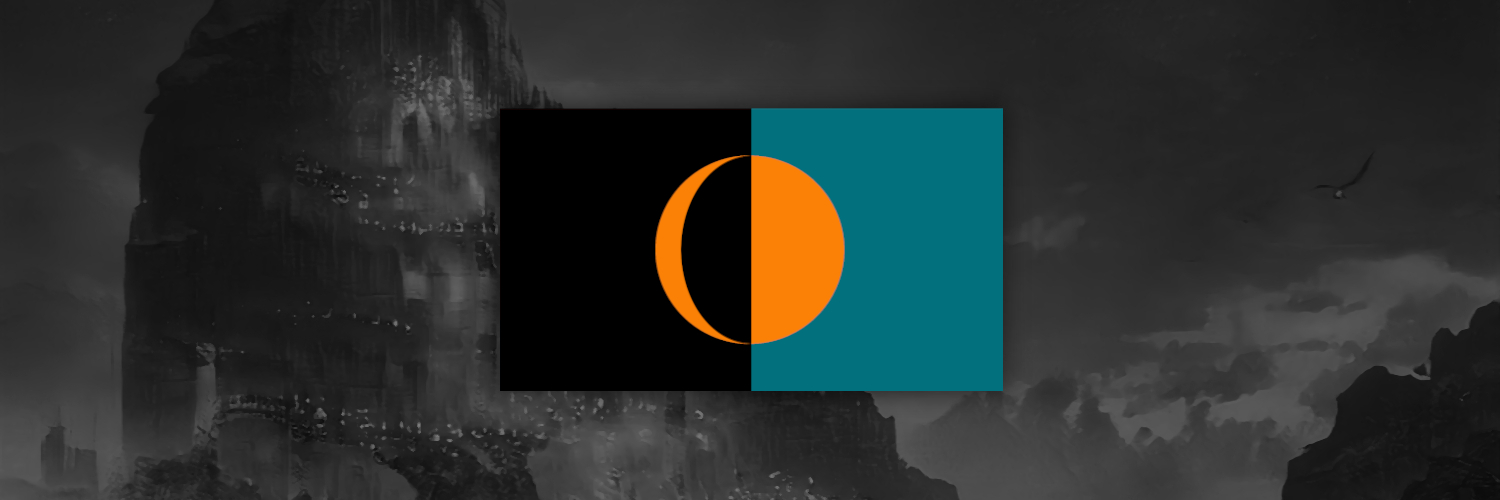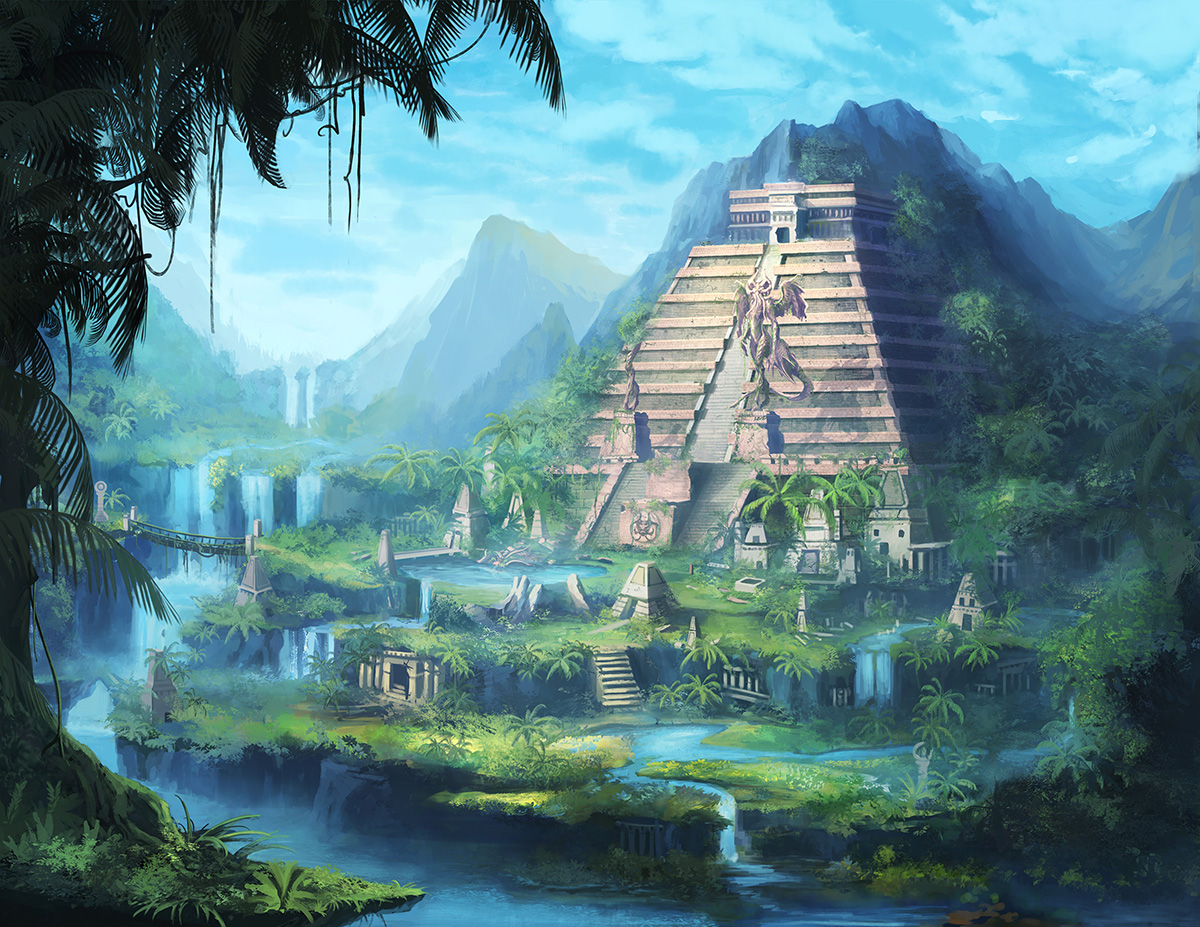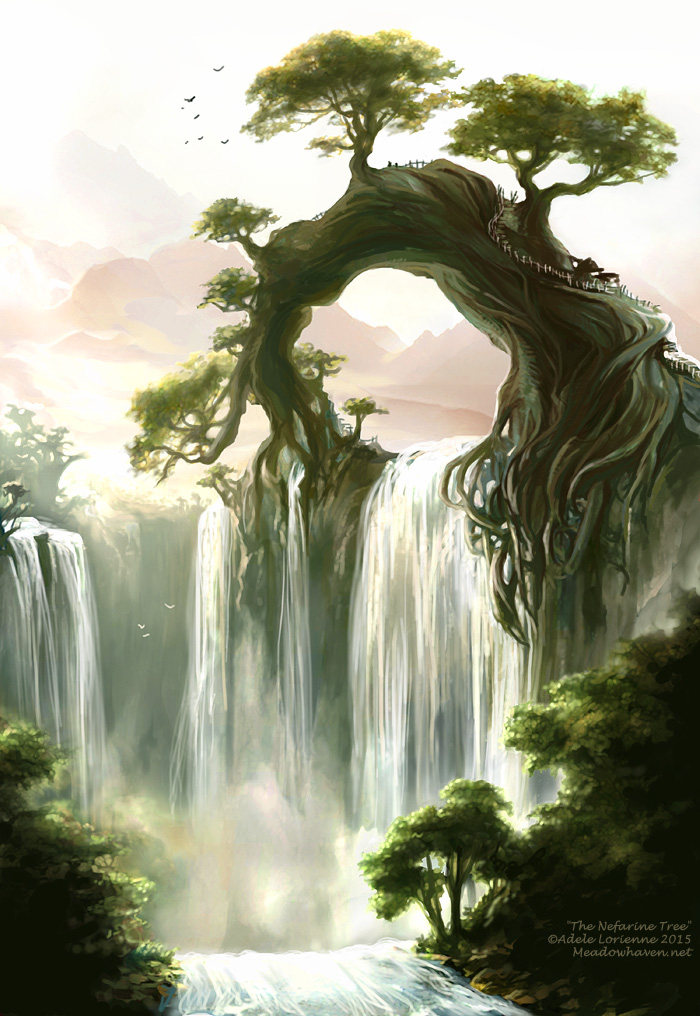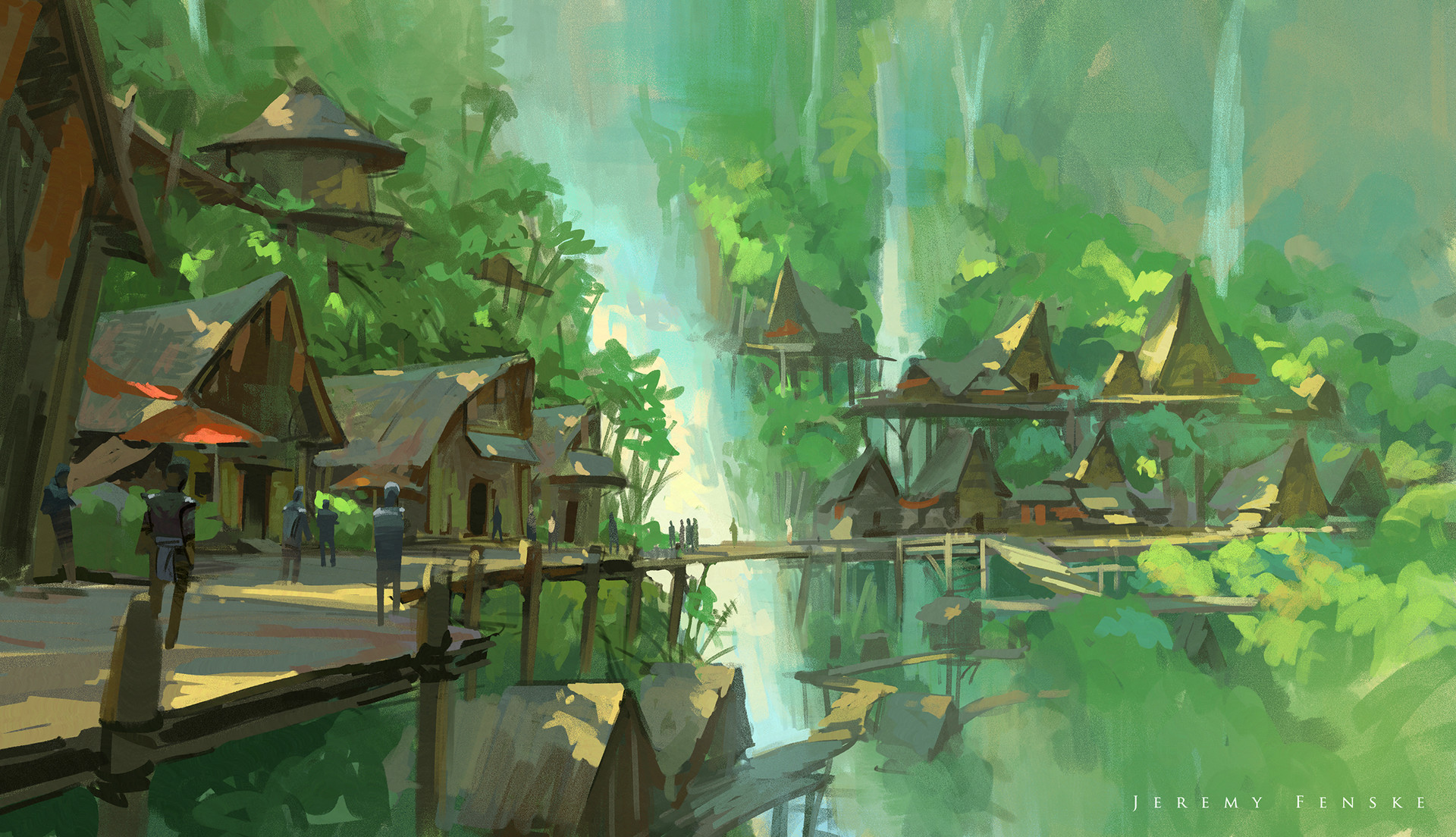Nergamesh (NURR-gah-mesh)
Nergamesh is a large and populous human nation on the eastern side of the southern jungles. Its hardy people worship the sacred duality of the god Etro, believing that the waxing and waning of the moon dictates the fortunes of mortalkind. Reflecting this is the kingdom's long history, marked by the violent rise and fall of dynasties. The nation has been refounded from naught but ashes several times over the past millenia.
Above: Nergamesh is a nation built atop the ancient legacy of Hargal, its people ever united under the rule of the divine Dragon Kings. Current generations raise their edifices besides the monuments of their forebears.
Location and climate
Nergamesh is cut-off from the Heartlands by the mountain realm of Achillonia and the warlike Amazons that dwell within. Nergamesh is a vast jungle realm nestled between the White Peaks of Achillonia and the southern seas. It is a land of verdant jungles, craggy cliffs covered in vegetation, razor-sharp mesas that hide rain-swept oases, dark cenotes, great rivers, waterfalls and marshlands that stretch for miles upon miles.Societal structure
The society of Nergamesh is divided into militaristic orders. The kingdom has a sovereign monarch, but beyond that recognizes no societal classes typical to a modern feudalism. Hargali culture adores physical power and strength of body, and thus it Is no great surprise that their society has been shaped by martial ideals. Each militaristic order (called “guards”) is represented by a totem beast that very much dictates the standing and reputation of the order. These orders form a hierarchy that – most often – one must climb through, should one desire to reach the highest levels. Each order is smaller and more influential than the last, meaning that the order of the Jackal consists of most of the population but holds little political power, while the Hydra Lords number in perhaps a dozen and yet command entire armies. Governmental decisions are voted on in the Grand Moot – a gathering of the representatives of each Guard. Although the lowest-ranking classes are the largest, they have the least votes on any particular subject. A Guard has more votes to spend in the Moot than any lower Guard, but less than any higher Guard. The hargali are tolerant of all races, but not of foreigners. Anyone is welcome within their borders regardless of their innate abilities or past history, but once there, all must adhere to the rules and doctrines of their society. Foreigners are treated with the same ruthlessly exploitative practices as born citizens. Everyone must pay taxes and otherwise pull their weight in society, and many foreigners have even been forcibly conscripted into one of the Guard after spending enough time in Nergamesh.Class system
The Guard are listed below in order of influence. Every hargali man is recruited into one of the guard and subjected to military training, with women being responsible for matters of home and state in times of war. Clerics and druids are not included in the class system but enjoy high societal status and superior civil rights.- Dragon King: the dragon is the one creature above all, to which all must pay homage. Commands the Dragon Princes -- the bloodsworn protectors of the eternal Dragon Throne.
- Hydra Lords: the hydra is a multi-headed beast, each working in unison, unkillable and unyielding. Military commanders.
- Wyvern Guard: the wyvern is the most noble of beasts, a dauntless spirit, and a deadly predator. Elite of the elite, flying cavalry.
- Basilisk Guard: the basilisk is a rare, mystical thing that inspires awe in the hearts of men and beast alike. Spellcaster warriors.
- Tiger Guard: the tiger is the apex-predator; the ever-feared ruler of the jungle. Elite forces, few in number but bred for battle.
- Heron Guard: the heron is the ever-observant master of its realm, and an indomitable warrior. Domestic guardians and keepers of the peace.
- Condor Guard: the condor is a graceful hunter and a bringer of inescapable death, but frail. Marksman corps, elevated in rank above other basic military arms thanks to their deadliness.
- Caiman Guard: the caiman is a merciless and uncaring killer, but lacking in ambition or guile. Veteran warriors, used as shock troopers and heavy infantry.
- Viper Guard: the viper is a careful stalker and a deadly assassin, but flees before the mighty. Rogues, spies, archers, assasins, scouts and the like, used martially and domestically.
- Jackal Guard: the fierce jackal is deadly in numbers, but easily cowed. Light infantry, backbone of hargali armies, traditionally wield shields with flails or spears.
Religion
The principles deities of the hargali are Ixel and Shaxel, the two faces of Etro. Ixel is a young man and represents life and healing. He is associated with the full moon. Shaxel is an old man that represents death and doom. He is associated with the new moon. Together they are represented as twins; symbols of duality and the cycle of life and death. Other widely worshipped deities are Ulfar (light) and Nyx (darkness) as well as Bahamut. Clerics and druids are highly respected in Nergamesh. Clerics of Ixel and Shaxel are not only numerous but also influential. Clerics of other deities are less common.
Other names
Third Great Kingdom of Hargal DETAILS
Civilization type
Kingdom
Founding Date
? ER
Government System
Stratocracy
Power Structure
Unitary state
Current leader
?
Leader title
Dragon King
Capital
Ur
DEMOGRAPHY AND POPULATION
Nergali
Grey elves
Notable minority populations
Wood elves
Wood gnomes
Demonym
Nergali
Hargali
Languages
Kipput
Common
Third Great Kingdom of Hargal DETAILS
Civilization type
Kingdom
Founding Date
? ER
Government System
Stratocracy
Power Structure
Unitary state
Current leader
?
Leader title
Dragon King
Capital
Ur
DEMOGRAPHY AND POPULATION
Nergali
Grey elves
Notable minority populations
Wood elves
Wood gnomes
Demonym
Nergali
Hargali
Languages
Kipput
Common
Neighboring Nations
Above: Nergamesh is a vast nation with numerous wondrous and magical wonders hidden in its jungles.
Above: Some of the ruins of past Hargali dynasties are ancient enough to have faded from the memory of Nergamesh's people.







Comments